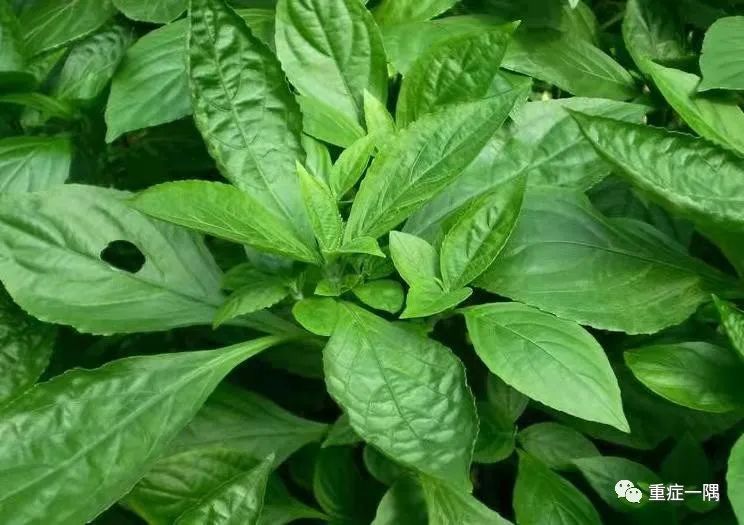 Click the blue text to follow us
Click the blue text to follow us
The “Seven Emotions” in Traditional Chinese Medicine (TCM) refers to the application of single herbs and the possible interactions that may arise from combinations of these herbs. Ancient practitioners summarized these interactions into seven categories: mutual assistance (相须), mutual use (相使), mutual fear (相畏), mutual killing (相杀), mutual aversion (相恶), and mutual opposition (相反).
Mutual Assistance (相须): This refers to the use of a single herb to treat a specific, singular condition.
Mutual Use (相使): This involves using one herb as the primary treatment while another herb assists, enhancing the efficacy of the primary herb.
Mutual Fear (相畏): This describes a relationship where the toxic side effects of one herb are suppressed or eliminated by another herb.
Mutual Killing (相杀): This refers to a relationship where one herb can reduce or eliminate the toxic side effects of another herb.
Mutual Aversion (相恶): This describes a situation where the combination of two herbs results in a decrease or even loss of efficacy of one herb.
Mutual Opposition (相反): This refers to a relationship where the combination of two herbs can produce or enhance toxic side effects.

 Practice Questions (Click to select an answer)1. (Single choice) When Ginseng (Ren Shen) is combined with Radish Seed (Lai Fu Zi), Radish Seed can reduce the Qi-tonifying effect of Ginseng. This relationship belongs to ____? A. Mutual Assistance (相须) C. Mutual Use (相使) B. Mutual Fear (相畏) D. Mutual Aversion (相恶) 2. (Single choice) When using herbs with strong toxic side effects, the relationship to consider is ____? A. Mutual Assistance (相须) C. Mutual Killing (相杀) B. Mutual Opposition (相反) D. Mutual Aversion (相恶) 3. (Single choice) The relationship where two herbs can enhance therapeutic effects is ____? A. Mutual Assistance and Mutual Use (相须相使) C. Mutual Use and Mutual Fear (相使相畏) B. Mutual Assistance and Mutual Aversion (相须相恶) D. Mutual Aversion and Mutual Opposition (相恶相反)
Practice Questions (Click to select an answer)1. (Single choice) When Ginseng (Ren Shen) is combined with Radish Seed (Lai Fu Zi), Radish Seed can reduce the Qi-tonifying effect of Ginseng. This relationship belongs to ____? A. Mutual Assistance (相须) C. Mutual Use (相使) B. Mutual Fear (相畏) D. Mutual Aversion (相恶) 2. (Single choice) When using herbs with strong toxic side effects, the relationship to consider is ____? A. Mutual Assistance (相须) C. Mutual Killing (相杀) B. Mutual Opposition (相反) D. Mutual Aversion (相恶) 3. (Single choice) The relationship where two herbs can enhance therapeutic effects is ____? A. Mutual Assistance and Mutual Use (相须相使) C. Mutual Use and Mutual Fear (相使相畏) B. Mutual Assistance and Mutual Aversion (相须相恶) D. Mutual Aversion and Mutual Opposition (相恶相反)
Appendix:

 A Story — Ban Lan Gen (Isatis Root)
A Story — Ban Lan Gen (Isatis Root)
The Dragon King of the East Sea and the Dragon King of the South Sea, while returning from the Heavenly Palace to the Dragon Palace, saw corpses scattered across the land and were both shocked and puzzled. Upon inquiry, they learned that it was due to an outbreak of plague. If not controlled, it would spread to the sea. The two Dragon Kings were anxious and quickly discussed countermeasures. The kind-hearted South Sea Azure Dragon volunteered, vowing not to return to the Dragon Palace until the plague was eradicated. The Dragon King was very pleased and sent him to work together with the East Sea Dragon Prince to eliminate the plague. The East Sea Dragon King’s grandson, the Purple Silver Dragon, upon hearing the news, jumped excitedly to the old Dragon King and insisted that the Dragon King agree to let him accompany his uncle, the Azure Dragon, to the human world. The Dragon King, troubled by the lack of a dragon prince to go to the human world (as the dragon princes were busy building an underwater paradise), readily agreed. The Azure Dragon and the Purple Silver Dragon bid farewell to the Dragon King, disguised as doctors, and came to the human world. The two uncles and nephews first went to the Medicine King Bodhisattva to obtain medicinal seeds, which they scattered everywhere and taught the people to carefully nurture the seedlings.
Before long, the medicinal seedlings thrived, growing as lush as reeds by the lake. The two uncles and nephews taught the people to boil the roots of these seedlings in water for the patients to consume. This miraculous medicine had astonishing effects, and patients quickly recovered one by one. Thus, people of all ages revered the Azure Dragon and the Purple Silver Dragon as deities and treated them as honored guests. Deeply moved, the two decided to remain in the human world, dedicated to preventing and treating the plague. Soon it was the fifteenth day of the eighth month. That night, the two uncles knelt by the sea, thanking the Dragon King for his nurturing grace. Then, hand in hand, they immersed themselves in the grove of divine herbs by the sea, transforming into two particularly robust medicinal seedlings. People, knowing that these seedlings were transformed from the dragon prince and grandson, named them “Dragon Root”. Later generations of physicians, when writing books, renamed it “Ban Lan Gen” (Isatis Root).
 END
END
